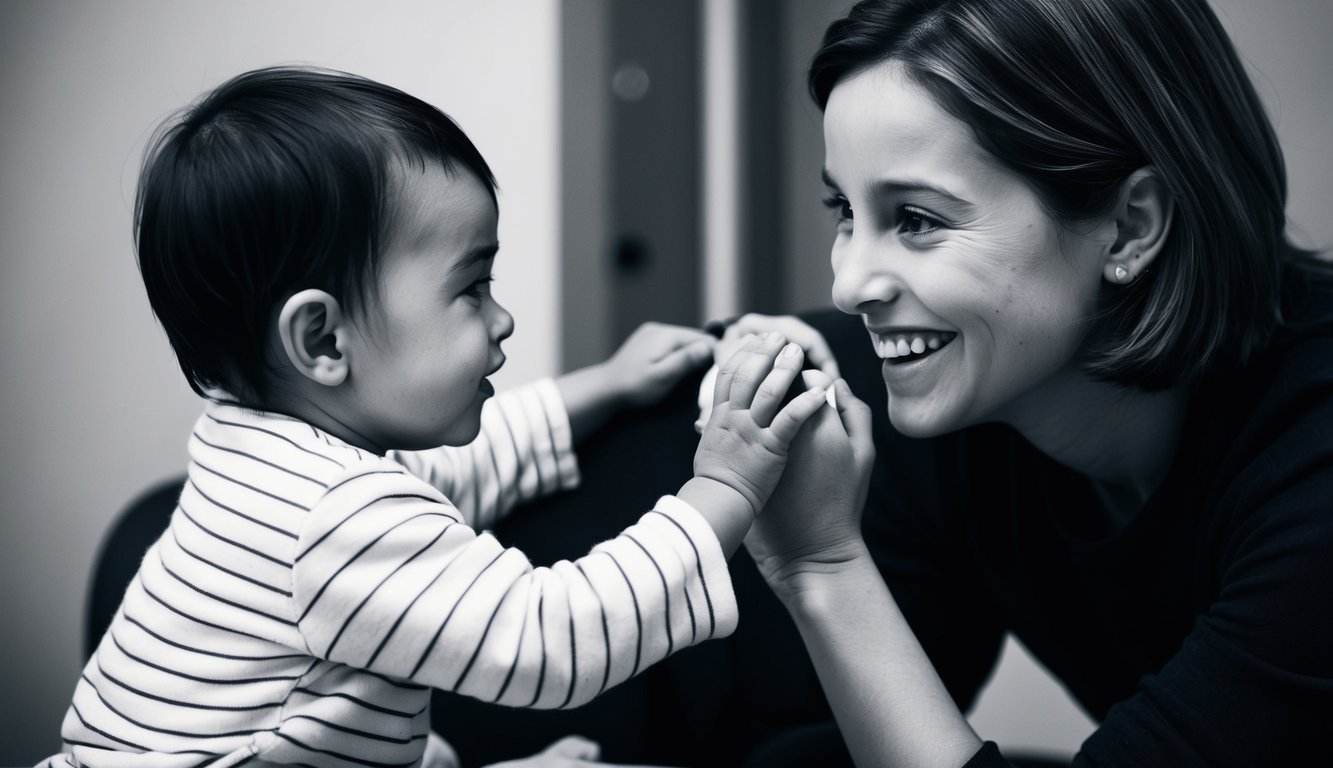PsychNewsDaily Publishers
100 Summit Drive
Burlington, MA, 01803
Telephone: (320) 349-2484
PsychNewsDaily Publishers
100 Summit Drive
Burlington, MA, 01803
Telephone: (320) 349-2484

Attachment theory offers a valuable framework for examining the emotional connections that exist between children and their caregivers. It elucidates how initial relationships influence social and emotional growth throughout a person’s life.
John Bowlby, a British psychoanalyst, pioneered attachment theory during the 1950s. His concepts were deeply rooted in evolutionary biology, ethology, and developmental psychology. Bowlby theorized that infants have an innate tendency to create attachments with caregivers as a survival mechanism.
Mary Ainsworth, a developmental psychologist, built upon Bowlby’s foundation. Her observational studies of mother-infant interactions unveiled various attachment styles. Ainsworth’s “Strange Situation” procedure emerged as a key methodology in attachment research.
This theory contested the dominant psychoanalytic perspective that infant-caregiver relationships were primarily rooted in feeding. Instead, it highlighted the critical role of responsive caregiving and emotional presence.
Attachment theory encompasses several fundamental ideas:
Internal Working Models are mental frameworks regarding oneself and others, shaped by early attachment experiences. These models inform expectations and behaviors in subsequent relationships.
Attachment styles represent distinct ways of relating to others:
The progression of attachment occurs in a series of developmental phases:
These phases illustrate the growing complexity of attachment behaviors as children mature. The quality of caregiving during these stages significantly impacts the child’s attachment style and future relational dynamics.

Attachment styles lay the groundwork for how individuals interact with others throughout their lives. These behaviors begin in early childhood and are significantly influenced by interactions with primary caregivers.
Researchers have identified four primary attachment styles among children:
Secure attachment is typified by children who trust in their caregiver’s availability and responsiveness, allowing them to explore their surroundings with confidence.
Anxious-ambivalent attachment describes children who are clingy and uncertain about their caregiver’s responsiveness, often exhibiting distress during separations and ambivalence upon reunions.
Avoidant attachment manifests in children who seem indifferent towards their caregivers, often not seeking comfort when upset and displaying minimal emotion during separations or reunions.
Disorganized attachment is characterized by erratic or confusing behaviors, with children appearing disoriented, freezing, or displaying contradictory actions.
Several elements influence the development of attachment styles:
Parental attachment patterns exert a strong influence on a child’s attachment style. Caregivers who consistently respond to their child’s needs are more likely to nurture secure attachments.
Environmental factors are also significant. Stressful life events, socioeconomic conditions, or cultural practices can all affect the quality of interactions between caregivers and children.
The child’s temperament may further impact attachment development. Some children may be more difficult to soothe or possess distinct needs that influence the caregiver-child relationship.
Attachment styles established in childhood can carry into adulthood, influencing interpersonal relationships and emotional regulation. Adult attachment styles are categorized as:
Secure adults generally have positive perceptions of themselves and others, finding comfort in both intimacy and independence.
Anxious-preoccupied adults may present dependency issues within relationships, fearing abandonment and seeking excessive intimacy and approval.
Dismissive-avoidant adults tend to prioritize independence and may find close relationships uncomfortable, often underappreciating emotional connections.
Fearful-avoidant adults desire intimacy but are apprehensive about being hurt, leading to challenges with trust and emotional closeness.

Childhood attachment profoundly influences emotional and social development. Understanding how attachment is evaluated and its lasting effects offers crucial insight into human relationships and well-being.
The Strange Situation Procedure, developed by Mary Ainsworth, is a widely recognized method for assessing attachment in young children. This structured laboratory procedure observes children’s reactions to brief separations from their caregivers, focusing on behaviors like proximity-seeking, contact maintenance, and resistance to comfort.
Other assessment tools include:
These instruments aid in identifying various attachment styles: secure, anxious-ambivalent, avoidant, and disorganized. Each style reflects a child’s expectations regarding caregiver availability and responsiveness.
Secure attachment during childhood serves as a foundation for healthy emotional and social development. Children with secure attachments generally exhibit:
Insecure attachment styles can lead to challenges in forming relationships, managing emotions, and coping with stress. Early attachment experiences play a significant role in a child’s mental health, academic achievement, and overall well-being.
Experiences of trauma or neglect can hinder the formation of secure attachments, leading to long-lasting emotional and behavioral challenges.
Childhood attachment styles often persist into adulthood, influencing intimate relationships and social connections. Securely attached adults often:
Conversely, those with insecure attachment styles may experience difficulties with trust, intimacy, and emotional regulation. However, attachment patterns can change through therapy, positive experiences, and increased self-awareness.

Caregiving methodologies and parenting approaches are pivotal in forming children’s attachment patterns. These practices shape the emotional bond between caregivers and children, impacting long-term social and emotional development.
Attachment-oriented caregiving prioritizes establishing a stable emotional foundation for children. Primary caregivers, typically parents, utilize techniques that foster trust and a sense of security. These include:
Attuned caregivers strive to comprehend and meet their child’s emotional requirements, promoting a sense of safety and confidence in their relationships.
Elements like physical affection, eye contact, and verbal encouragement are vital aspects of attachment-centered care. These factors contribute to the strengthening of caregiver-child connections.
Parenting styles can greatly impact attachment outcomes for children. Studies have identified four primary parenting styles:
Authoritative parenting, characterized by warmth, responsiveness, and well-defined limits, is frequently associated with secure attachment. This style effectively balances emotional support with clear expectations.
In contrast, authoritarian and permissive parenting styles may result in insecure attachment patterns, while neglectful parenting is often linked to disorganized attachment, leading to potential long-term emotional challenges.
Consistency in caregiving practices across different attachment figures (parents, grandparents, etc.) can further reinforce positive attachment outcomes.
Social workers and caregiving professionals play a crucial role in fostering healthy attachment. Their understanding of attachment theory guides interventions and support strategies for families.
Key intervention areas include:
Professionals in these fields enhance caregiver-child relationships through targeted strategies, offering guidance on responsive caregiving and addressing barriers to secure attachment.
Implementing attachment-informed practices in social work and caregiving can yield improved outcomes in areas such as child development, mental health, and family dynamics.

Attachment disorders can profoundly affect a child’s emotional and social progression. Early detection and appropriate interventions are essential for supporting affected children and fostering healthy relationships.
Attachment disorders in children are characterized by ongoing difficulties in forming and sustaining relationships. Two principal categories are recognized: Reactive Attachment Disorder (RAD) and Disinhibited Social Engagement Disorder (DSED).
RAD involves emotional withdrawal along with a limited capacity for positive interactions. Children with RAD may evade comfort from caregivers and have difficulty responding to affection.
DSED is marked by indiscriminate friendliness and a lack of appropriate boundaries with unfamiliar adults. Such children may readily seek attention from strangers without hesitation.
Diagnosis necessitates careful evaluation by mental health professionals who consider the child’s background, observe behaviors, and assess relational dynamics.
Treatment approaches for attachment disorders focus on enhancing the child-caregiver relationship. Therapeutic interventions aim to build a secure base, fostering trust and emotional regulation skills in the child.
Common therapeutic methods include:
These therapies involve both the child and the caregiver, concentrating on attunement, responsiveness, and positive interactions. Patience and consistency are key components of successful treatment.
Recovering from trauma and insecure attachment requires a multifaceted approach. A stable, nurturing environment is essential for healing.
Therapeutic interventions may include:
Caregivers play a pivotal role in the recovery process, needing support and education to effectively understand and respond to their child’s needs.
Establishing a network of supportive relationships can assist children in building trust and enhancing their social competencies. This may entail interventions at school and the provision of community support services.
“`